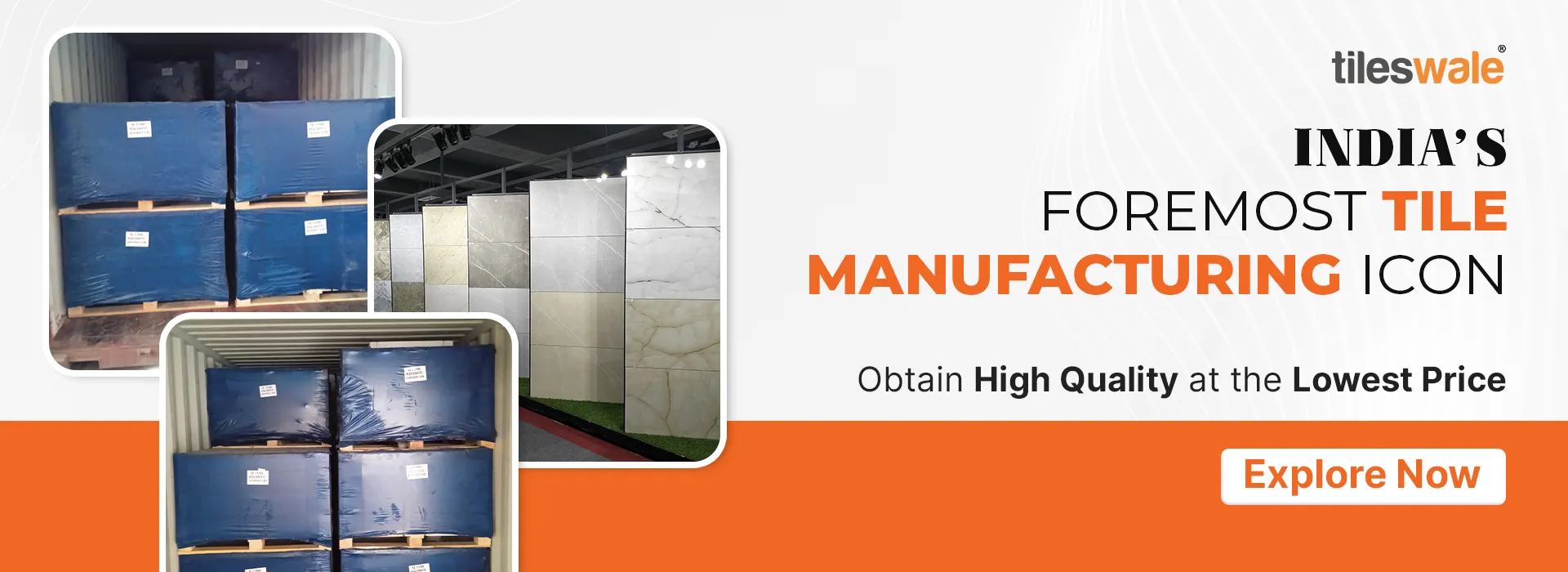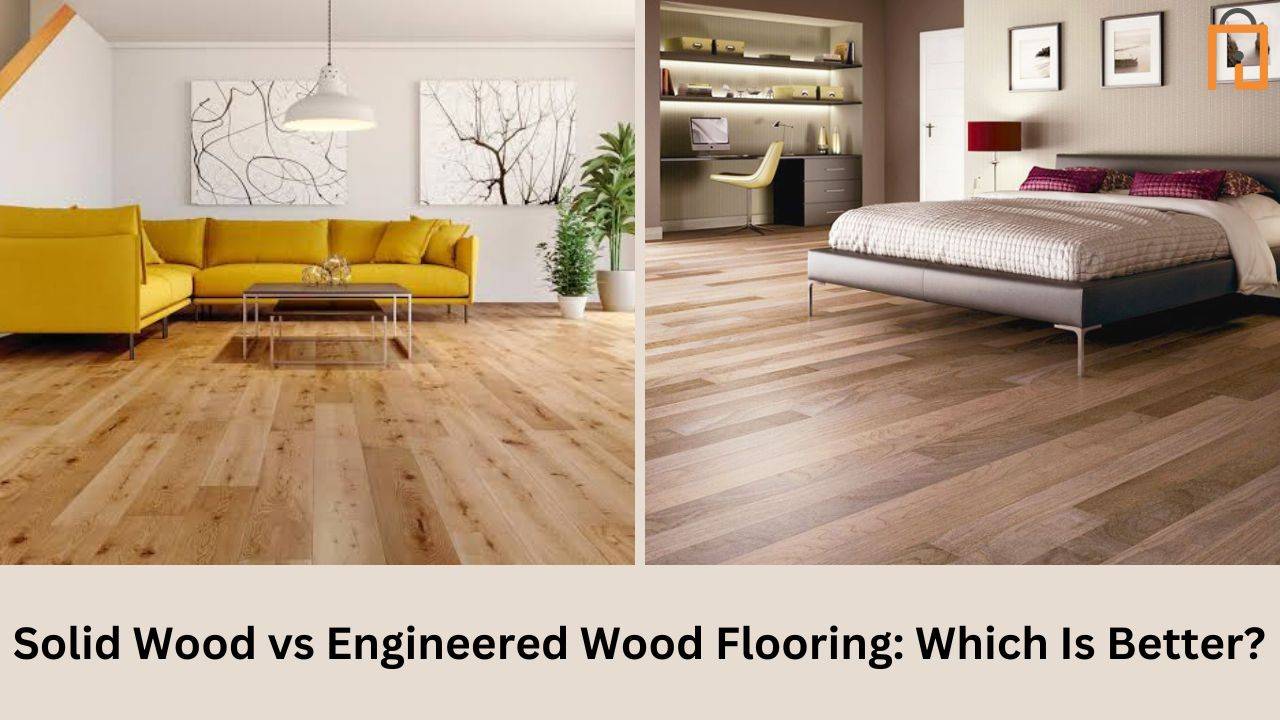
World's First Ceramic-Tile & Sanitaryware Live Marketplace. Get it on Google Play
Get it on App Store
World's First Ceramic-Tile & Sanitaryware Live Marketplace. Get it on Google Play
Get it on App Store
By Tileswale
Wooden flooring has long been used in home construction in the Midwest. One of the main reasons it is so popular is the insulation it provides to the overall inner environment of the house. On the other hand, India has been a tile-flooring enthusiast because the climate here allows for such flooring.
In recent years, people in India have embraced wooden flooring as a viable alternative to other types of flooring. It's interesting to note that people have different levels of knowledge about the same subject. This blog will explain in detail the major differences between two popular types of wooden flooring: solid wood flooring and engineered wood flooring.
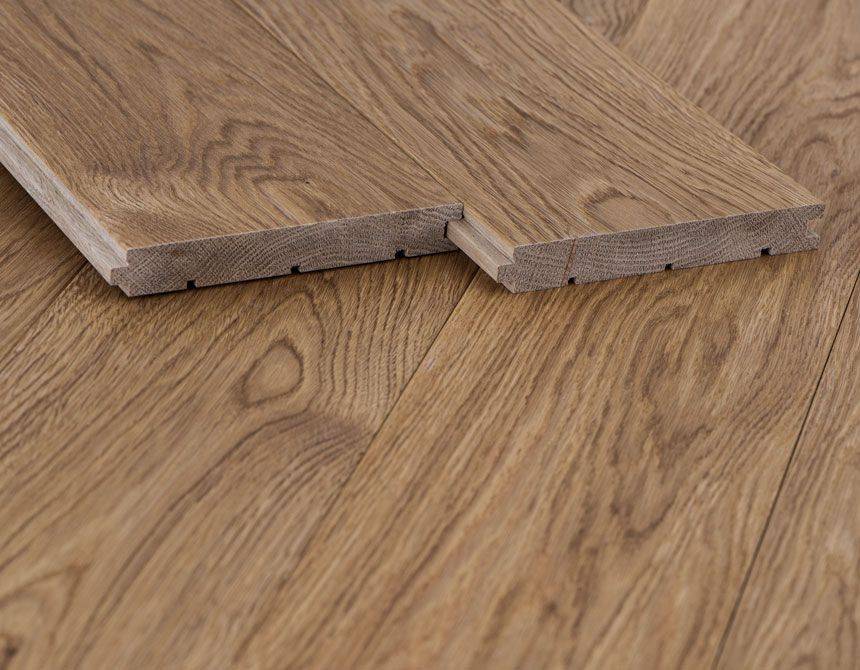
Like a jigsaw puzzle, solid wood flooring has gouges that precisely lock themselves when installed. Even after a perfect fit from all sides, it must be properly nailed to the ground by skilled professionals. Hardwood is commonly used for flooring. Because it is made of solid wood, this flooring is very easy to resurface with polish or other floorings.
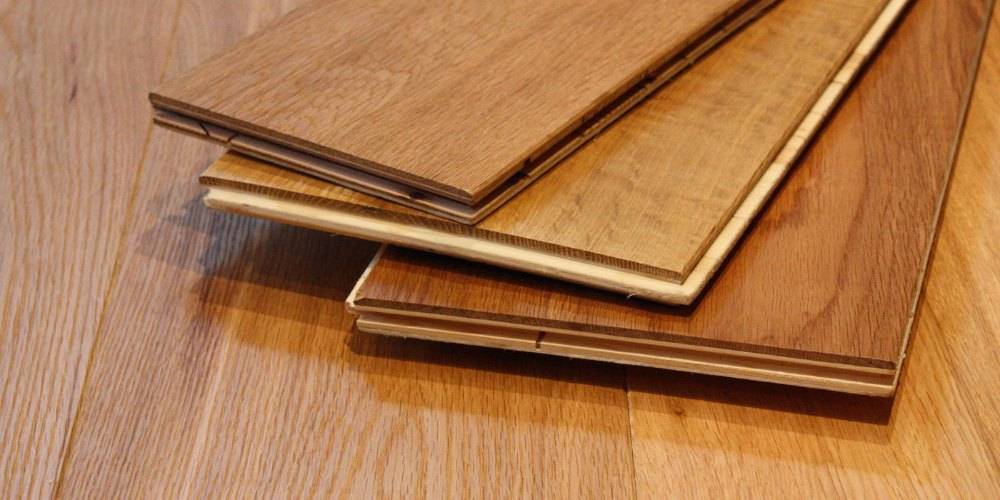
The depletion of the environment has had a significant impact on forest wood. Because of the scarcity of solid wood, engineers developed engineered wood, which is structured in such a way that it can be turned into flooring. Some of the most common engineered woods used to make flooring are plywood, HDF (high-density fiberboard) or MDF (medium-density fiberboard), particleboard, and veneered boards.
The boards of solid hardwood flooring are typically slimmer than those of engineered hardwood flooring. Prefinished and unfinished boards of solid hardwood are available. Solid hardwood flooring typically has very close joint between boards and a wider range of colours and varieties than engineered hardwood flooring.
Engineered hardwood flooring has wider floorboards. Some pre-finished engineered hardwood flooring has slightly chamfer edges, resulting in slight grooves between boards, whereas solid hardwood flooring has very tight seams between boards. Engineered hardwood flooring is almost always sold pre-finished, and there is a smaller selection of color schemes and varieties available than solid hardwood.
We are confident that you can tell the difference between the two wooden floors now that you know what they are and how they look. Before making a decision, every aspect of the comparison should be understood so that there is no room for error. We are about to see the detailed final showdown of engineered wood flooring vs solid wood flooring.
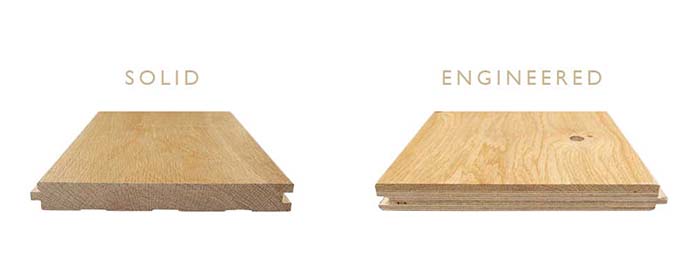
Solid Wood: Durable for Decades (Avg: 70 yrs)
Engineered Wood: Comparatively Less long lasting due too thin wood structure (Avg: 25 yrs)
Winner: Solid Wood Flooring(SWF)
Solid Wood: Expensive at an Avg. price of Rs. 640 per square foot.
Engineered Wood: Comparatively cheaper at an Avg. price of Rs.450 per square foot.
Winner: Engineered Wood Flooring(EWF)
Solid Wood: Maple, Teak, Oak, Redwood, Mahogany, and other hardwoods were used.
Engineered Wood: There are various types of MDF, Particle Board, and Plywood which are used.
Solid Wood: Not environmentally friendly because forests must be cut down to obtain solid wood, and trees are not easily renewable.
Engineered Wood: It is environmentally friendly because it is made from wood products and derivatives. Some of the chemicals used as binders, however, may be toxic.
Winner: Engineered Wood Flooring(EWF)
Solid Wood: Normally available in 3' thick, 2' wide, and lengths ranging from 12 to 84 inches.
Engineered Wood: Boards ranging in thickness from 3' to 9' inch are available. It is sold in much wider boards, up to 7 'wide, with lengths ranging from 12 to 60 inches.
Solid Wood: Although solid hardwood does not appear to be noticeably different from engineered hardwood, buyers prefer it for its durability and thus has a high resale value.
Engineered Wood: The lifespan and less durable material leads to a lesser to almost no resale value.
Winner: Solid Wood Flooring(SWF)
Solid Wood: Solid wood can be sandblasted and refurbished endlessly.
Engineered Wood: Because the upper layer of engineered wood is thin, it can only be lightly sanded and refinished once or twice.
Solid Wood: Tree-grown solid wood planks.
Engineered Wood: An aramid fibre material made by adhesively bonding layers, particles, fibres, veneers, or thin wood boards together.
Solid Wood: Natural woods vary in hardness from very hard to soft as found in nature.
Engineered Wood: HDF is a hard material, whereas MDF is a medium-hard material. Particleboard is soft and brittle.
Winner: Solid Wood Flooring(SWF)
Solid Wood: Does not withstand constant water or moisture. When a tree is cut down, it loses its water resistance.
Engineered Wood: Engineered wood is more moisture resistant than solid wood. It does not distort or change sizes quickly when exposed to water.
Winner: Engineered Wood Flooring(EWF)
Engineered wood flooring was said to be a poor imitation of solid hardwood, but product quality improvements have changed that. Solid hardwood may have a distinct advantage in reputation for some people and remains a top preference among experts and buyers for durability, but engineered wood flooring has an advantage over others due to its lower cost and ease of installation.
Both types of flooring have advantages and disadvantages. In some ways, solid wood flooring appears to be superior, while in others, engineered wood flooring appears to be the clear winner. It is ultimately up to the buyer to determine the best fit based on their expectations, requirements, and spending capacity. The comparison of solid wood flooring vs engineered wood flooring is an attempt to help buyers understand the difference and make the best decision possible.
It is a real issue that buyers face when looking to purchase the flooring they prefer. Here is the best platform designed specifically for buyers like you. Tileswale is a B2B2C platform that serves as a live marketplace for tile buyers and sellers. In minutes, you can order any flooring you want from the comfort of your own home. Compare prices from thousands of sellers worldwide to find the best deal. Tileswale makes Buying & Selling simple.
We hope you're ready to make a purchase now that you have all of the information! You can also take the outsource all difficult decisions to experts. Call or visit any of our Tileswale websites, or download the Tileswale App, and our thousands of verified sellers and company personnel will handle the rest. Happy Buying To You!
Submit your inquiries, we will see the rest
size:
Quantity:

+ Requirements

We have received your Inquiry. We will soon connect you with relevent Sellers via tileswale App. download now!!

